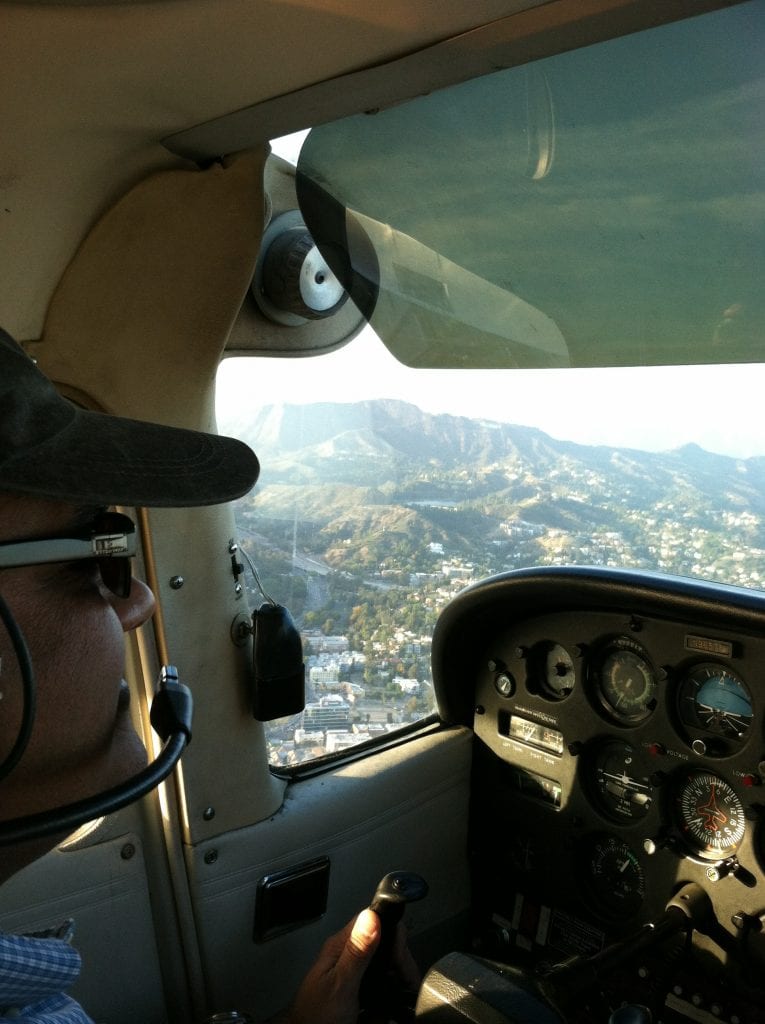 I’ve been on a couple of conference calls recently that were great reminders of everything that’s challenging about these valuable, yet inescapable, staples of office life.
I’ve been on a couple of conference calls recently that were great reminders of everything that’s challenging about these valuable, yet inescapable, staples of office life.
They also reminded the pilot in me of what we can all do to make conference calls more productive.
Over dinner with good friend and fellow Ketchum colleague, Stephen Waddington, I was wistfully talking about how the Federal Aviation Administration (FAA) mandates aviation communications, and how business conference calls would benefit from following similar principles.
He suggested I put together a blog post on the subject. So, I turned to my training as a private pilot to share my perspective. Thanks also to my good friend Noam Gelfond for his invaluable advice. Let’s fly…
1. Push to talk:
In the cockpit, we have to push a button to talk. In other words, the default is that the microphone is not on. In our daily lives though, the microphone is always on, and this can present innumerable obstacles.
Our phone microphones are very sensitive. Background noises: papers rustling, cats meowing, keyboards clicking, even snoring (it’s happened) and toilets flushing (yes, also a victim).
The simple solution for all this is to use the push to talk approach but in reverse.
Flight Plan (what we should do):
- All of us should practice a “mute by default” approach, only unmuting our phones when we speak. If you are on the agenda to speak, be prepared to unmute on cue, so folks are not waiting (the most awkward of all silences) for you to figure out that you can’t be heard.
2. Kiss the microphone:
In aircraft communication equipment there is a “squelch” button that controls microphone sensitivity, and we pilots adjust it at the beginning of the flight as per the background noise. At maximum setting, it squelches all the sound; we reduce the squelch progressively until our voice is able to activate the microphone.
During conference calls, we don’t have this luxury. So, try to keep your mouth as close to the microphone as possible… and project! This allows the rest of us to hear your voice clearly and minimizes background noise.
Flight plan (what we should do):
- Avoid cradling the phone between your jaw and shoulder while speaking
- For normal phones and cellphones: be especially careful that one of your fingers isn’t covering the microphone
- For headsets: bring the microphone no more than a few inches from your mouth. For mics on earphone bud wires, dangle the mic close to your mouth
- For speakerphones: ensure there’s nothing between your mouth and the mic, and clearly project directly toward the microphone
- Use extension microphones when available.
3. Holding pattern:
Even though electronic signals travel at 186,282 miles per second, conference calls go through multiple layers of electronic relays and switches; each one adding its own delay to the signal.
That’s why we tend to talk over each other. We either think the other person has finished, or can’t hear them when they start. So, let people know you’re done – and that others may now have the floor.
Flight plan (what we should do):
- Allow the other person to finish what they’re saying, then speak
- Say, for instance, “this is RP”
- No need for the old-school “Over” as in WW2 movies. Just a polite indication like, “So that’s my opinion – what do you think guys?” or “Back to you Juliette.”
4. Short and sweet:
We’ve all been guilty of “thinking out loud” on conference calls, meandering from point to point, potentially wasting valuable time.
Maybe it’s not having the visual cues from other participants, but if it’s rude and inconsiderate in real-life meetings, it’s more so on conference calls.
In contrast, here is my typical call to Morristown Tower: “Morristown Tower, Cardinal 17142, 10 North, Inbound with Whiskey.”
The bare minimum of words for maximum effectiveness in communications. Keep it short.
Flight plan (what we should do):
- Formulate what you have to say before you say it
- Rehearse it lightly. Identify at which phrase or word you’re going to stop
- Wait for an opportunity in the conversation
- Announce who is speaking
- Identify whom you’re addressing
- Keep it short
- Let people know you’ve finished
- Hand the call over to someone by name, or say something like “What does the team think?”
5. Air traffic control:
When I fly there is no doubt as to who the boss is: it’s the controller, making sure the traffic flows smoothly and safely to its destination.
All conversation is directed to and from them, while of course all other pilots are listening.
I am not suggesting that conference calls be as regimented as this, but I am suggesting that all conference calls should have a clear chairperson who steers the conversation, cuts short unproductive dialog, and propels the meeting towards the successful completion of the agenda.
Flight plan (what we should do):
- Prior to the call, appoint a leader
- The leader manages participants to ensure the free flow of ideas, that everyone has a chance to speak, discretely encourages those who are unmuted and creating ambient noise to rectify the distraction, encourages people to speak into the microphone, etc.
- For more formal calls, such as those involving a client or prospect, even more order and discipline protocols are required.
So there you have it – five simple rules that’ll make conference calls way more productive, less frustrating and guaranteed to lead to more smooth take-offs and landings.
Over and out.


